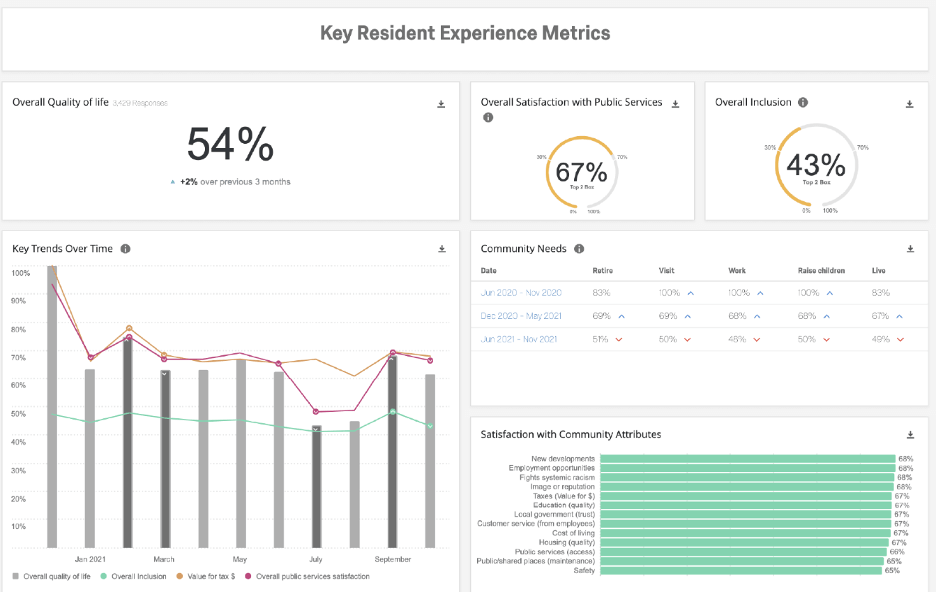Today’s citizens expect to connect with government services in safe, secure, seamless, and reliable ways. They want their interactions with government services to feel just like interacting with their favourite companies or brands.
However, research shows that citizen expectations are not being met: The report revealed that among all key pillars of customer experience – satisfaction, trust, and likelihood to recommend – government agencies were the bottom-performing industry globally.
Given that governments are so integral to the lives of every single citizen – perhaps now more than ever – federal, state, and local governments must make a stronger effort to develop and implement strategies for improving the citizen experience.
What is citizen experience?
Citizen experience is the sum accumulation of “moments of truth” that an individual encounters through each step of their journey when interacting with the government. It’s their perception of government, based on all their experiences with government that they have had. This includes a wide variety of transactions, from researching available services and obtaining or updating licenses, to applying for assistance and receiving benefits – and everything in between.
However, in government, citizens are more likely to have an experience of government that encompasses all the programs and services that they’ve ever interacted with – for example, a citizen’s experience with a DMV will carry forward to their perceptions of experience from a social service agency, even if they are totally separate agencies or even jurisdictions.
Citizen experience in the public sector is similar to customer experience with leading companies in the private sector but viewed through a different lens with different outcomes and values. When you think about your experiences with your favorite brand, what characteristics set their digital services apart from other brands? Do they make it easy to shop? Find deals? Get help?
For government agencies, this translates to outcomes such as:
- Providing the right services that are relevant to the community
- Making services accessible to the people who need them
- Making it easy for citizens to find information people need
- Providing excellent in-person service delivery for citizens when they access services at physical locations (e.g., the DMV)
And just like in the private sector, citizen satisfaction can be measured by KPIs such as ease of use, task completion, and CSAT scores.
Learn More: Take control of your citizen experience with Community Pulse
Why is citizen experience important?
Citizens’ experiences with government employees affect how much they trust their government. When citizens trust their governments more, there are many benefits:
- Citizens are more likely to share their lived experiences with government leaders, resulting in more relevant citizen services.
- Communities are more likely to follow government regulations, which is especially important when they are related to health guidelines.
- Communities who trust their governments are more civic-minded and more likely to vote, which creates more prosperous communities.

How can government agencies enhance citizen experience?
There are many ways to improve citizen experience, and strategies differ somewhat for federal governments versus state and local governments.
Federal governments
Federal government agencies focus on how best to serve each individual customer’s needs through its various programs, instead of the more local perspective of building communities. Therefore, these organisations should prioritise cross-agency service design so that citizen experiences with multiple services that span across different federal agencies are seamless and frictionless. This is especially important for high-impact service provider agencies.
There needs to be a strong emphasis on transparency and accountability, as many federal services affect the nation at scale (such as the post office, for example.) There also needs to be a strong focus on security protocols such as FedRAMP.
State and local governments
State and local governments tend to have more physical locations where government employees provide services through direct interaction with citizens, and as such are much more location-dependent. Local services tend to also be focused on very targeted geographies – usually, the community in which the government is located. The focus, therefore, should be on improving communities and nurturing one-to-one communication between government organisations and citizens.
At the state level, governments should craft strong policies that improve communities holistically, as well as develop strong relationships with local jurisdictions and service providers. At the local level, governments should focus on delivering services efficiently and effectively, and offering options for digital services in all possible scenarios.
5 citizen experience best practices for all government services

- Focus on citizen engagement to better understand who lives in your communities and what they want and need.
- Citizens expect convenience. Meet them where they are – offer multiple ways to gather feedback to cast a wide net (QR code, SMS text, email, social media, etc.).
- Understand your customer journeys for key service delivery moments.
- Monitor areas of friction and prioritise improvements that will have a positive impact on customer experience.
- Minimise manual processes and prioritise digital transformation, giving citizens the ability to interact digitally via self-service. This will help you:
- Enable citizens to get answers and complete tasks in real-time
- Offer service that is on par with the private sector
- Free up government employees to offer high-touch support to those who need it
What is the ROI on improving experiences to better meet citizen expectations?
Recent data shows just how valuable improving citizen experiences can be for government organisations:
Improve trust
Citizens are 9 times more likely to trust a government agency when they are satisfied with the service they receive.
Reduce call centre costs
Dissatisfied citizens are twice as likely to contact agency hotlines, which are typically the most costly communication channels, three or more times for help. (source)
Boost employee satisfaction and productivity
Building a customer-centric culture mutually reinforces employee engagement and organisational health – the ability to set and achieve strategic goals – and it can have powerful long-term effects on employee performance.
Improve digital services to deliver better citizen engagement and experiences
Government agencies need to listen to their citizens at scale. Experience management helps make that possible, even with staff constraints and a lack of research expertise.
Qualtrics offers multiple out-of-the-box solutions to engage citizens, and they’re built just for government.
Qualtrics Community Pulse is a ready-to-go solution built specifically for government agencies to quickly reach more residents, using pre-validated survey templates and reporting dashboards built by government and research experts. Using the survey instrument as a starting place, you can add or modify questions to fit your community’s unique circumstances or your government’s needs.

Community Pulse helps you understand citizen experience so you can make strategic decisions with the confidence you’re acting on what matters most to your community.
Take control of your citizen experience with Community Pulse